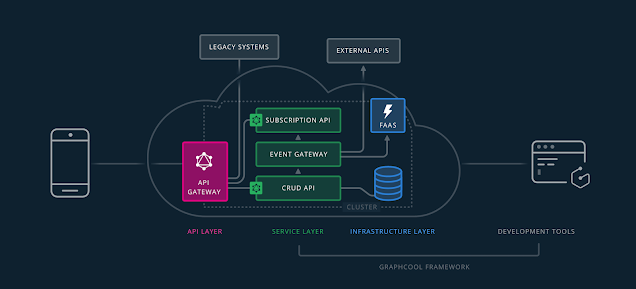 |
Introduction:
Modern API development has undergone a significant transformation. One of the most impactful changes is the emergence of GraphQL has emerged as a compelling alternative to traditional RESTful APIs. This open-source query language, born at Facebook, empowers developers with a more flexible and efficient approach to data interaction. Let's delve into the core concepts, advantages, and practical applications of GraphQL, exploring its impact on web development today.
Core Concepts:
Schema Definition Language (SDL): Think of SDL as the blueprint for your GraphQL API. It defines data types (like integers, strings, booleans) and custom types tailored to your specific needs. This blueprint also outlines relationships between these types, allowing you to specify how different data points connect.
Queries: Imagine reaching into a vast library and requesting precisely the information you need. Queries in GraphQL serve this very purpose. You can request specific fields from a particular type, eliminating the unnecessary transfer of irrelevant data. Nested queries enable fetching related data in a single request, enhancing efficiency.
Mutations: Not just for retrieving data, GraphQL allows modifications too. Mutations represent actions for altering data on the server. These can involve creating new entries, updating existing ones, or even deleting data points.
Subscriptions (Optional): For applications demanding real-time updates, subscriptions offer a welcome solution. Imagine a live chat or a social media feed; subscriptions allow clients to "subscribe" to data changes on the server, ensuring immediate updates without continuous polling.
Benefits and Use Cases:
The advantages of GraphQL are numerous:
- Efficiency: By requesting only the required data, you minimize data transfer and boost performance, especially crucial for mobile applications.
- Flexibility: Nested queries eliminate the need for multiple API calls for related data, simplifying your code.
- Strong Typing: Schemas provide clarity and validation for both clients and servers, leading to fewer errors and smoother development.
- Versioning Agility: Schema evolution in GraphQL doesn't break existing clients, promoting flexibility and future-proofing your API.
- Rich Tooling: A vibrant ecosystem of libraries and tools exists for building, testing, and debugging GraphQL APIs.
These benefits make GraphQL ideal for various scenarios:
- Complex Applications: When dealing with intricate data relationships, GraphQL shines by providing a clear and efficient way to fetch and manipulate data.
- Mobile Applications: Limited bandwidth and battery life on mobile devices make GraphQL's data-fetching efficiency a major advantage.
- Single-Page Applications (SPAs): Efficient data fetching without over-fetching or under-fetching is essential for SPAs, and GraphQL delivers precisely that.
Building a GraphQL API with Example:
To solidify your understanding, let's explore building a simple GraphQL API with an example. We'll choose a popular GraphQL server library and create a basic data model, say, for books with titles, authors, and genres. Using SDL, we'll define the schema and relationships between these elements. Resolvers will handle queries and mutations based on our data model. We'll showcase a basic query fetching book details and its author, with an optional demonstration of adding a new book via a mutation.
Error Handling and Testing:
Robust error handling plays a crucial role in GraphQL APIs. It's essential to handle errors gracefully and provide informative messages to developers or client applications. Testing becomes equally important, ensuring your GraphQL API functions as intended. Tools like Jest and Apollo Testing Library can be leveraged for this purpose.
Conclusion:
GraphQL represents a significant step forward in API development, offering developers a powerful and versatile tool for data interaction. While there's a learning curve, the undeniable benefits and growing adoption within the industry make it a valuable skill to possess. As developers embrace its power, we can expect even more innovative and efficient applications in the years to come. Dive deeper into the vast resources available for GraphQL development and start harnessing its potential for your next project!
